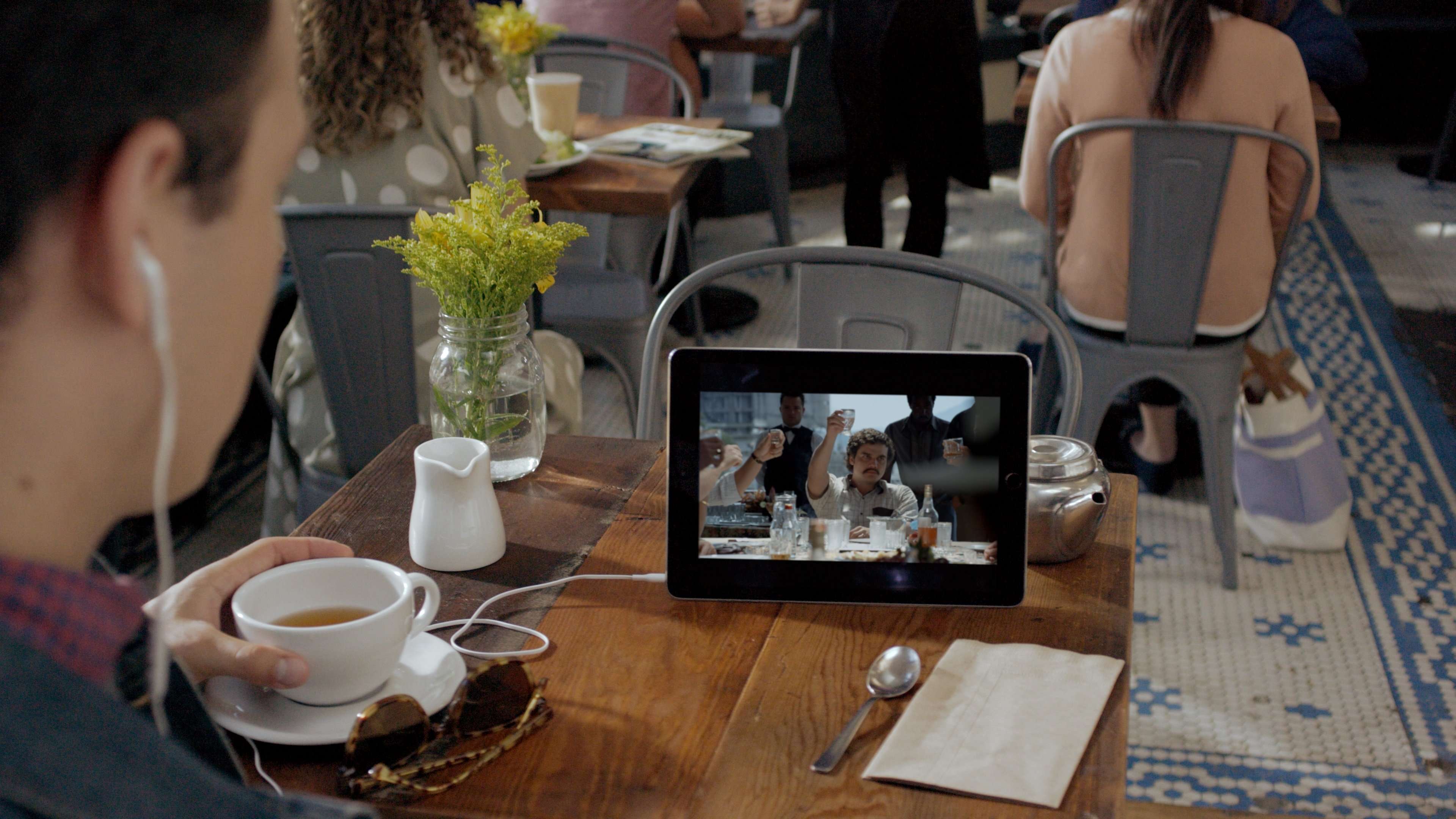The average Netflix (NASDAQ:NFLX) subscriber watches about two hours of on-demand streaming video per day, according to the company's VP of original content, Cindy Holland.
In Netflix's fourth-quarter letter to shareholders, management wrote that its 58 million U.S. subscribers spend over 100 million hours of Netflix per day on their televisions, an average of 1 hour, 43 minutes. That doesn't include time spent watching Netflix on laptops, tablets, and smartphones, so Holland's comment is consistent and may even underestimate time spent streaming in the U.S.
What makes Holland's stat even more interesting is that the average 18- to 34-year-old in the U.S. spends about two hours watching live and time-shifted television, according to the latest report from Nielsen. And it's a good bet younger users are likely to stream Netflix more than average. That suggests younger users are watching more Netflix than everything else on TV combined.
The amount of time spent with a product like television or Netflix is a strong indication of how much a person values that product. And the amount a user values a product is indicative of how much they're willing to pay. But the difference in pricing between Netflix and pay-TV subscriptions is totally out of whack.
Netflix plans start at $9 per month. The average pay-TV subscriber in the U.S. pays $107 per month. Even a bare-bones skinny bundle costs at least $20 per month, and most networks include commercials -- another form of payment.
The price disparity may contribute to how the average millennial spends their time. That said, when asked why they don't subscribe to cable, the most common answer millennials gave was they get enough entertainment from over-the-top services like Netflix.
Netflix has tremendous pricing power right now. Management knows it, too. Its recent price hike in the U.S. saw prices jump $2 per month for its most popular and high-end plans. That follows steady $1-per-month increases over the past five years ($2 for the highest-priced plan in 2017). Consumers will either pay what Netflix asks, or they'll have to find another way to fill two hours every day. Traditional pay-TV has already proven far less economical for many consumers, even if Netflix continues raising prices.
1 thing that could prevent further price increases
The more time subscribers spend streaming Netflix, the more willing they should be to pay more for the service. But a slew of new streaming products is set to come out this year that could restrict the growth in time spent on Netflix as subscribers split their allegiances.
If Disney (NYSE:DIS), for example, is successful in launching Disney+ and expanding Hulu, it could provide an economic substitution for Netflix. Disney has said Disney+ will be priced substantially lower than Netflix, and Hulu recently lowered its ad-supported price to $6 per month. Disney CEO Bob Iger has suggested offering customers a bundled option for its direct-to-consumer services, which may put pricing pressure on Netflix.
Netflix management pointed out in its fourth-quarter letter to shareholders that it's not just other media companies like Disney with which it's fighting for consumers' time. It's fighting with anything that takes up screen time. The example management gave was the video game Fortnite.
Netflix has a huge advantage over the upcoming competition, though. Its existing subscribers telegraph Netflix HQ every day for about two hours the exact kind of content they're interested in seeing more of. It can then fire up the content machine and buy or make that kind of content, producing a virtuous cycle leading to increased engagement. That trend might be even stronger with millennials who spend less time than average watching other television and more time watching Netflix. That'll make it hard for most new services to truly compete against it (instead of just competing for second place) while enabling further price increases.
The company's philosophy with price increases is to produce value for its customers first, allow the customers to see the value, and then raise prices. Rinse and repeat. Whether that strategy continues as new competitors enter the market remains to be seen, but Netflix has done a very good job with it so far.

JaceLightning on March 15th, 2019 at 13:33 UTC »
Every few years there's an article like this. "Millennials are killing the cable industry"
But really, who wants to watch TV?
With Netflix, I can watch the shows whenever I want to. I can pause, rewind as many times as I want to catch that line I missed. I can watch on any device I want: computer, TV, phone, etc. There are no commercials and it's still much, much cheaper than cable.
I can't understand why anyone would watch TV.
Whompa on March 15th, 2019 at 13:19 UTC »
Amongst other reasons, Cable providers have constantly been trying to bait and switch for years now.
“Only $15.99 a month!*
*for 3 months then regular fees apply”
Fuck that. Just give it to me straight.
Sometimes I think about going back to Cable, but that hidden fee shit is a major deal breaker.
edit: Jesus my inbox. Pretty telling in how terrible cable companies have been treating its consumers...
CharmedConflict on March 15th, 2019 at 12:03 UTC »
Turning on the TV when I'm staying at a hotel gives me PTSD flashbacks to the dark days when I had to watch.... whatever was on. shudder